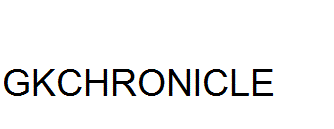Indian Polity / Union Executive



|

|
Article 52 says there should be a President of India. Article 53 says all the executive authority of Union of India shall get vested in the hands of the President. He exercises his powers on his own or with help of the officers subordinate to him. Article 58 talks about the required qualification to become president of India.
The required qualifications for president of India are,
In addition to the above qualifications, the presidential candidate must have the same qualifications as required for a Member of Lok Sabha.
Article 54 says about election of President
of India. It says the President of India should be elected indirectly by the system of proportional representation by means of single
transferable vote.
He is elected by an electoral college containing the elected members of the Parliament and the elected members
of State legislative assemblies. The elected members of legislative assemblies of Puducherry and Delhi are eligible to participate.
They were made eligible in 1992 by the 70th Constitutional Amendment
and it was effective from 1995.
The President of India takes oath in front of the Chief Justice of India (CJI) and in CJI's absence, the senior-most judge of the Supreme Court
administers the oath.
According to Article 59, Parliament decides the salary and allowances of President of India. The salary and allowances are charged on the Consolidated
Fund of India and it shall not be reduced at any time to his disadvantage while he is in the office.
He is also eligible for the pension after retirement
even if he is President for one day. The pension is half that of the salary. The salary of the President of India is taxable. He has no power to
increase or decrease his salary. The current salary of president of India is Rs. 5,00,000 per month.
The Impeachment motion against the President can be initiated in either House of the Parliament. Before such an initiation, a notice must be
served to the President 14 days in advance.
The notice must be signed by 1/4th members of the House that
includes even nominated members. After that, the initiating House has to approve the motion by 2/3rd members of
total members of that House.
After that, the notice is transmitted to the other House. The other House will inquire on the allegations of the initiating House.
Meanwhile, the President
may plead his case directly or through his attorney. After that, if the second House also approves the motion with same majority, then President stands removed.
In case of standstill between the two Houses in removing the President, the motion gets defeated and there will not be any joint session.
So far, no
President was removed but there was impeachment notice given to then Presidents of India, V.V. Giri in 1969 and N. Sanjeeva Reddy in 1979. Both the notices
were drawn back.